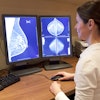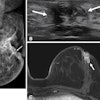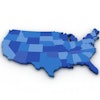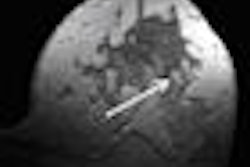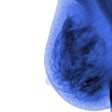Although more than 90% of women think that early breast cancer detection via mammography screening saves lives, it's important to compare its life-saving absolute benefit with its expected harms when deciding whether or not to participate in a screening protocol.
That's according to a new study published in the online journal BMC Medical Informatics and Decision Making by researchers in the department of radiology at John H. Stroger Jr. Hospital in Chicago and the department of veterinary and biomedical sciences at the University of Nebraska.
Dr. John Keen and James Keen, Ph.D., sought to calculate the age-dependent absolute benefit of screening in three traditional ways: the absolute risk reduction from repeated screening, the number of women needed to screen repeatedly to save one life, and the survival percentages with and without mammography. They also estimated the average benefit of a single mammogram.
According to the researchers, the life-saving benefit of mammography gradually increases with age along with the screen-free absolute death risk, which is about 1% over 15 years, starting at age 55. The corresponding risk of developing breast cancer is about 6%. Repeated screening starting at age 50 saves about 1.8 lives over 15 years for every 1,000 women screened.
The average benefit of a single screening mammogram is 0.034%; in other words, 2,970 women must be screened once to save one life. Assuming a base case 20% relative risk reduction, the survival percentage in younger women at age 40 is 99.52% without and 99.62% with screening, meaning there is a 0.1% increased chance of survival with screening than without it.
"For a woman in the screening subset of mammography-detectable cancers, there is a less than 5% chance that a mammogram will save her life," the authors wrote. "By comparing mammography's life-saving absolute benefit with its expected harms, a well-informed woman along with her physician can make a reasonable decision to screen or not to screen for breast cancer."
Reactions to the study are mixed, according to the journal. Dr. Stephen Duffy of Cancer Research UK Clinical Centre at Barts in London argues that direct results from empirical data might be more trustworthy than modeled estimates derived by combining data from disparate sources.
Dr. Michael Retsky from the Harvard Medical School in Boston praised the study, noting that it is a step in the right direction considering that too often women ages 40 to 49 are asked to sign informed consent for mammography without being properly informed of the potential risks, BMC Medical Informatics and Decision Making said.
Related Reading
Mammography procedure volume drops 16% since 2000, March 17, 2009
Radiologists overestimate breast imaging malpractice risk, February 9, 2009
Breast centers can manage malpractice risk, January 13, 2009
Treatment delays common in men with breast cancer, July 8, 2008
Walking the tightrope: The legal and regulatory impact of digital mammography, October 11, 2007
Copyright © 2009 AuntMinnie.com

